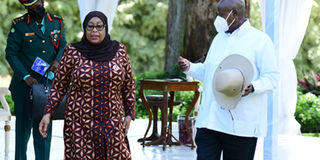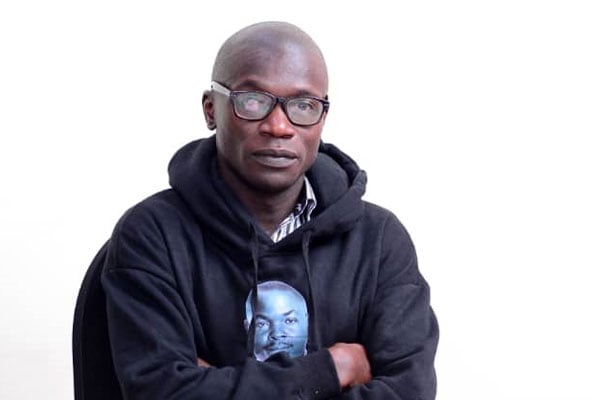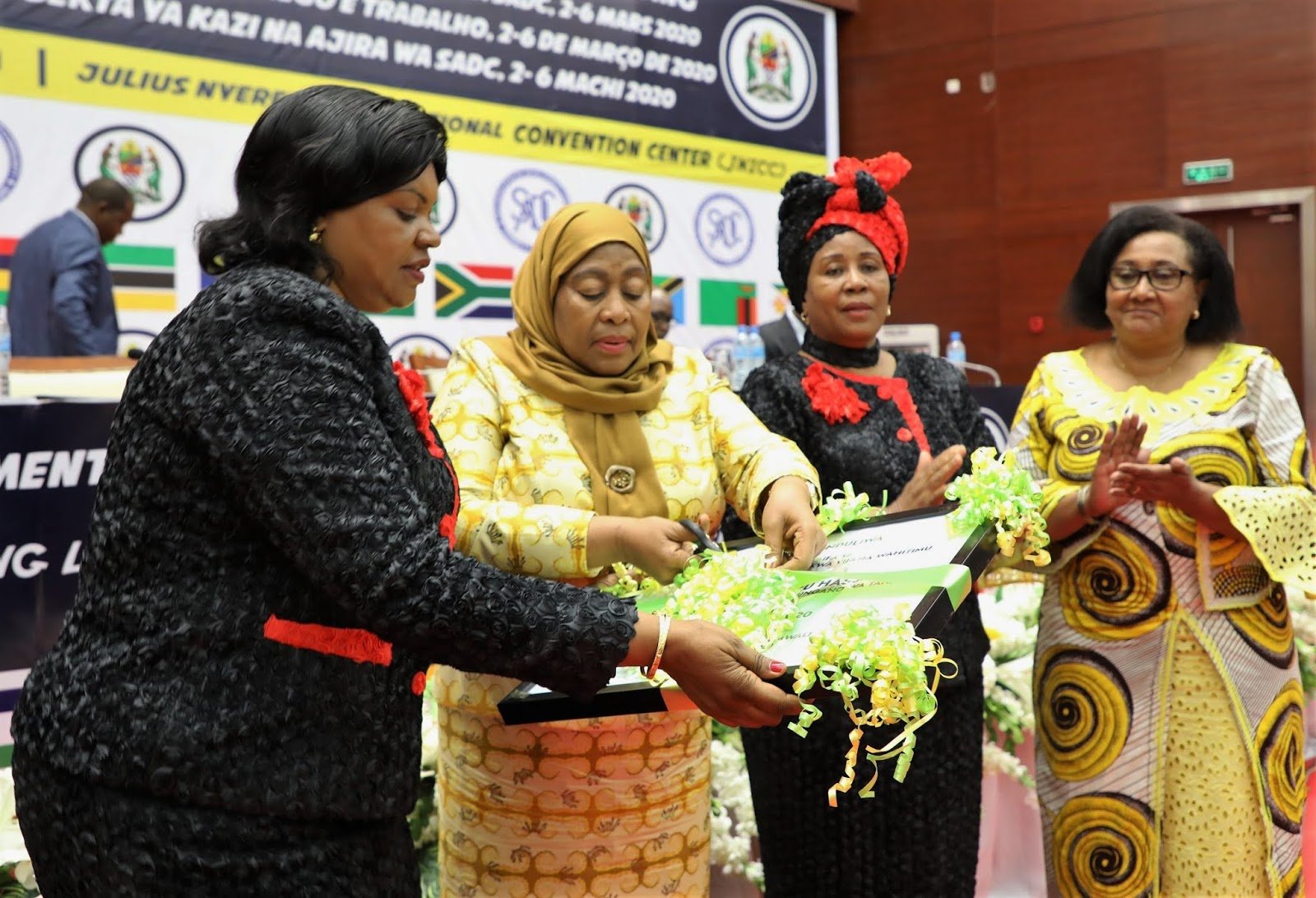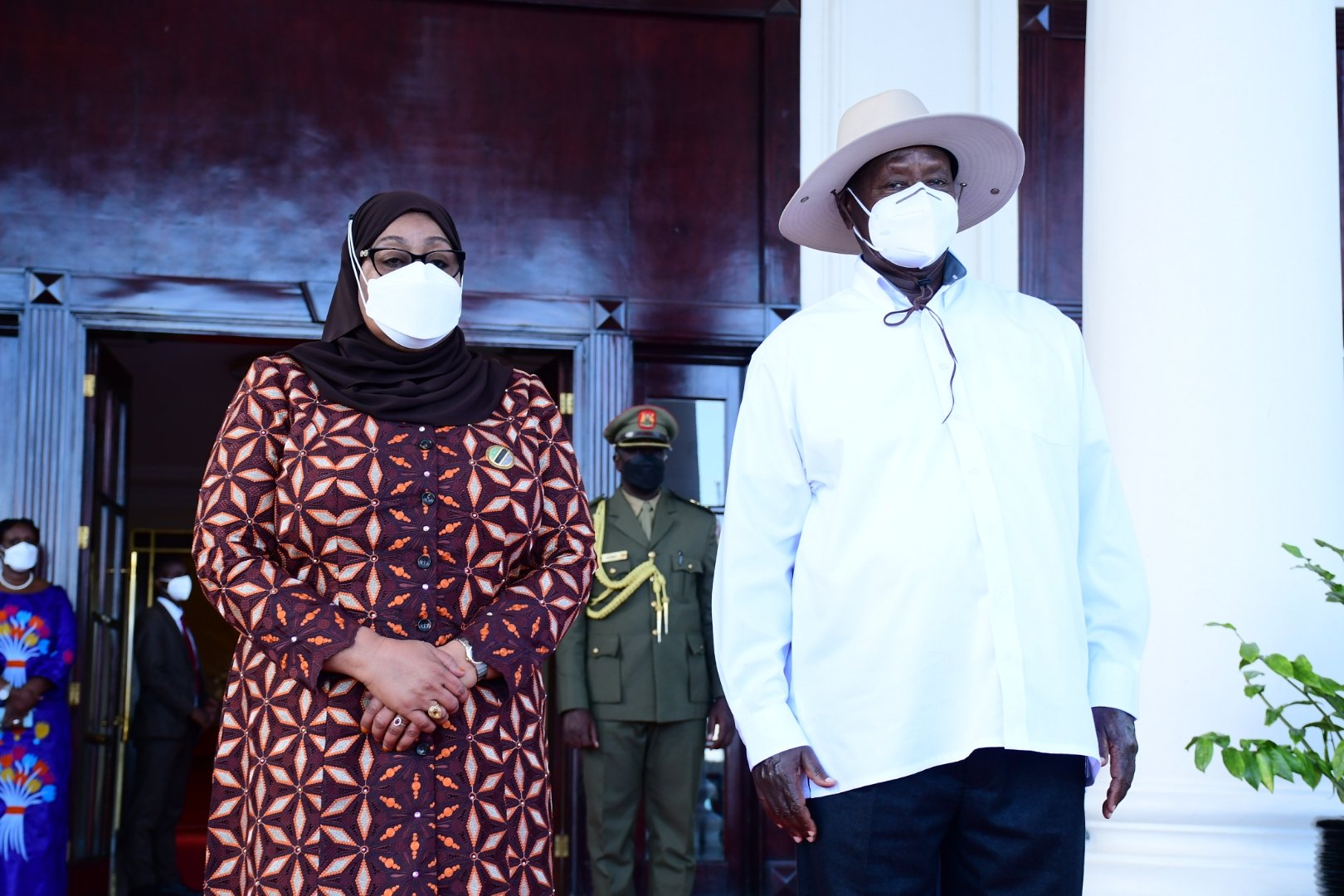Prime
Two years later: Suluhu steers Tanzania’s dream to lead East Africa

President Museveni (right) hosts his Tanzanian counterpart Samia Suluhu Hassan in Kampala in May last year. PHOTO | ABUBAKER LUBOWA
What you need to know:
- Today marks two years since Samia Suluhu Hassan took over the reins in Tanzania, instituting a raft of both economic and civil reforms that have seen her country rival Kenya, East Africa’s economic powerhouse, Derrick Kiyonga writes.
Ms Samia Suluhu Hassan, who is East Africa’s first female president, used International Women’s Day not to brag just about Tanzania’s economy, but also to take a veiled jab towards Kenya which is considered to be the region’s economic power.
Without showing evidence, Suluhu didn’t only chest thump about how Tanzania is the best-performing economy when compared to the other seven countries in the East African Community (EAC), but she claimed that there is some country in the region that does not have forex reserves to last a week.
“Let no one lie to you (Tanzanians),” said Suluhu. “We are at a better place compared to our neighbours. Their dollar reserves cannot last a week, our reserves can push us for four months. They are here begging us for guarantees so that they can buy fuel.”
If figures are to go by, Kenya’s Gross Domestic Product (GDP) stands at $110.3 billion and dwarfs that of Tanzania which stands at $67.84 billion. But Kenya has recently experienced economic hardships to the extent that the Central Bank of Kenya (CBK) ordered commercial banks to ration dollars following a shortage of the currency and the race to protect reserves.
“We are now scavenging for dollars. Only half of every six banks we call daily for dollars will have something for us. Three of the banks will ask us to check later,” Tanzania’s Citizen newspaper quoted a top executive of a manufacturing firm who preferred anonymity for fear of retaliation from CBK.
With Kenya shilling depreciating compared to the Uganda and Tanzania shillings, which have habitually been weaker currencies, Suluhu said she had not helped the destitute country after she pretended that Tanzania was having a comparable dollar dearth.
Second anniversary
Today marks two years since Suluhu took charge of Tanzania following the sudden death of John Pombe Magufuli who had been accused of stifling the opposition and media freedoms.
With Kenya under William Ruto retreating to protectionism, demonstrated by a March 6 notice to all milk importers from Kenya Dairy Board (KDB) therein suspending imports of powdered milk, Suluhu with her outward-looking policy has emerged as one of the biggest pillars of the regional integration, challenging Kenya’s supremacy in the process.
The collapse of the EAC in the 1970s is always blamed on the Community’s highest body, the East African Authority, which consisted of the three presidents, not meeting after 1971 because Tanzania‘s Julius Nyerere’s refused to meet Uganda’s Idi Amin who successfully carried out a coup that ousted Nyerere’s friend Apollo Milton Obote.
But also, ideological differences between Nyerere, who posed as a socialist, and Jomo Kenyatta, Kenya’s first president, who posed as a capitalist.
Before it even gained independence in 1963, Kenya had a deep-rooted economic structure rooted in capitalist lines and it thus modelled itself on the mixed economies of Western Europe yet Nyerere’s Tanzania, on the other hand, had received such an inadequate colonial inheritance that its independent rulers had virtually a clean canvas to work upon.
Starting with Nyerere’s Fabian socialism, Tanzania progressively moved to a more systematic communal system, with an overwhelming state sector plus peasant cooperatives.
While Nyerere is deemed as one of the godfathers of the EAC spirit, he had a business mind as Suluhu has turned out to be as she tries to prove that she can be a woman of her own, having emerged from obscurity and having served for years as Magufuli’s vice president.
It was the rather inward-looking Magufuli who set in motion the construction of the East African Crude Oil Pipeline (Eacop) – that will transport Uganda’s oil from mid-western Uganda to Tanzania’s port of Tanga – when he signed an agreement with President Museveni.
But Suluhu has enthusiastically taken over from him with Tanzania formalising all the nitty-gritty that is needed to have the 1,443-kilometer heated pipeline completed.
Even when the European Union Parliament passed a resolution last year asking the project to be delayed, citing human rights and environmental concerns, Suluhu’s administration didn’t let go.
“Some development partners have been expressing their suspicions in the implementation of this project, especially on issues of environment and human rights, but our assessment is clear, that all such issues had been well considered prior to the implementation of the project,” said Tanzania’s prime minister Kassim Majaliwa.
It wasn’t cast in stone that the pipeline would go through Tanzania because the initial plan of the oil was to leave the shores of Lake Albert in western Uganda and connect with Kenyan oilfields in the northwest of the country near Lokichar.
From there, it would run southeast and terminate at a new port to be constructed near Lamu, an old trading town on the Indian Ocean. Uganda authorities, however, dumped Lamu for Tanga citing two factors: cost and speed of completion.
The contention was that the Tanga route would be cheaper and that Uganda had come to an agreement with Tanzania on lower transit fees.

Former Tanzanian president John Pombe Magufuli (L) and his then vice president Samia Suluhu. PHOTO | FILE
In what is seen as giving traders from landlocked countries alternatives, Suluhu had tried to market Dar es Salaam port as an alternative to Kenya’s Mombasa, once again triggering a competition between these two neighbours.
For decades, Mombasa has been critical to all landlocked countries surrounding the region and this was indicated in the 2021 statistics from the Kenya Ports Authority (KPA) that showed that Uganda (76.7 percent) accounted for the vast bulk of transit cargo through Mombasa. South Sudan (10.6 percent) and the DRC (5.7 percent) were the other popular destinations.
Implementation of strategic projects
When it comes to the Standard Gauge Railway (SGR), Tanzania has led the way having tested the electric SGR line between Dar es Salaam and Morogoro, raising hopes of cheaper and faster transport.
Of the SGR ever commissioned, the trains, running at an average speed of 160kph, are anticipated to cut the travel time between Dar es Salaam and Morogoro to about two hours from four by bus and five by train on the metre gauge railway.
The 300km Dar-Morogoro line is the first phase of the SGR project – launched in 2017 by Magufuli – and is expected to run up to Mwanza on the shores of Lake Victoria and Kigoma on the north-eastern shores of Lake Tanganyika in five phases.
There are plans to add connections to Rwanda, Burundi, and the Democratic Republic of Congo as part of the East African Railway Master Plan.
In August last year, the Tanzanian government asked for bids for the construction of the 367km Uvinza-Gitega line that will extend the SGR to Burundi, with works already underway.
Also last December, Tanzania signed a $2.2 billion (Shs8.2 trillion) deal with two Chinese contractors that will see the final section of the 2,102 km SGR completed by 2026.
Under Suluhu, the Dar es Salaam port which serves land-locked countries such as Malawi, Zambia, DR Congo, Burundi, Rwanda, and Uganda – and also handles more than 80 percent of cargo destined for inland Tanzania – has upped its game.
When Suluhu visited Uganda in 2021, she dropped a host of inducements to entice Ugandan traders back to the Dar es Salaam port. These included removing trade barriers and improving investment in transport along the central corridor.
Suluhu secured a bilateral agreement with Uganda to bring down the tab that Uganda-bound cargo trucks from Dar es Salaam through Mutukula picked from $500 (Shs1.9m) per 100km to $10 (Shs38,000). This went into effect at the start of the 2022/2023 financial year.
“Logistically, they have put in special infrastructure, which can be used by Ugandan goods. They have added more containers and then they have also repaired the [train] wagons,” Mr Thadeus Musoke Nagenda, the chairperson of Kampala City Traders Association (Kacita), says of the Central Corridor.
“It’s Tanzania that has repaired the Ugandan wagons for transportation of our goods so their trade is simplified. They have extended the Standard Railway Gauge to Mwanza so that we can easily get our goods to Jinja and Port Bell,” he adds.
Leadership style
Besides infrastructure, Suluhu has tried to move away from Magufuli‘s uncompromising leadership style that earned him “bulldozer” as a nickname.
Magufuli had banned four privately-owned Tanzanian newspapers – Daima, Mawio, Mwanahalisi, and Mseto – on grounds that they were troublemakers and unethical. In February last year, Suluhu’s administration restored the licences as part of her efforts to support civil liberties.
“The decision to lift the ban on four Tanzanian newspapers is a positive step for press freedom in the country,” the International Press Institute (IPI) reacted after the ban had been lifted. “But these bans should never have been enacted in the first place, and it is essential now that relevant legislation, including the Media Services Act, be reformed. We welcome the government’s intent to review the law, a process that must be carried out in close partnership with the media community.”
Though positive steps have been taken, Suluhu’s administration has a lot of work to do as laws that are considered unfriendly to the media are still intact.
The 2016 amendments in the Media Services Act of 2016 gave the information minister sweeping powers to punish media houses and journalists without further consultation with lawyers and other media arbitration stakeholders.
Besides giving the minister full powers to ban any publication or newspaper that prints information deemed to affect national security and public health, it also gave the government a direct say on the content of private media, on issues that the government will deem to be of national importance, then wields this section to punish such media houses.
It also prohibits the publication of cabinet issues even if a journalist can prove that the source dossier was a bona fide cabinet document.

A map showing Tanzania’s ambitious standard gauge railway project. President Suluhu continues the implementation of mega strategic projects started by the late Magufuli. PHOTO | COURTESY
Another provision that freedom of expression activists find repressive is the one that necessitates users of all social media platforms to be licensed as well as have freelance contributors and correspondents accredited.
Last year, Suluhu order the law to be reviewed but the outcomes have never been revealed. In enhancing civil liberties, Suluhu’s victory so far has been the return of Tundu Lissu, the Tanzanian opposition leader who had fled to exile in Europe citing Magufuli’s repressive tactics.
Lissu left Tanzania in 2017 after he was shot 16 times, mostly in his lower abdomen, in an attack by mysterious gunmen in the administrative capital Dodoma. Before Lissu could return, Suluhu had lifted a six-year ban on political rallies that had been imposed by Magufuli.
In the policy that had been enforced from 2016, only politicians were allowed to conduct rallies in their constituencies but other political gatherings or protests were barred.
“I am here to declare that the ban on political rallies has been lifted. It is the right of political parties to hold rallies but we all have responsibilities,” Suluhu said.
“Just inform us as the laws require. Security organs will evaluate your requests. If there is any threat, they won’t allow you, but for the step we are in right now, they will definitely allow you to conduct your rallies.”





